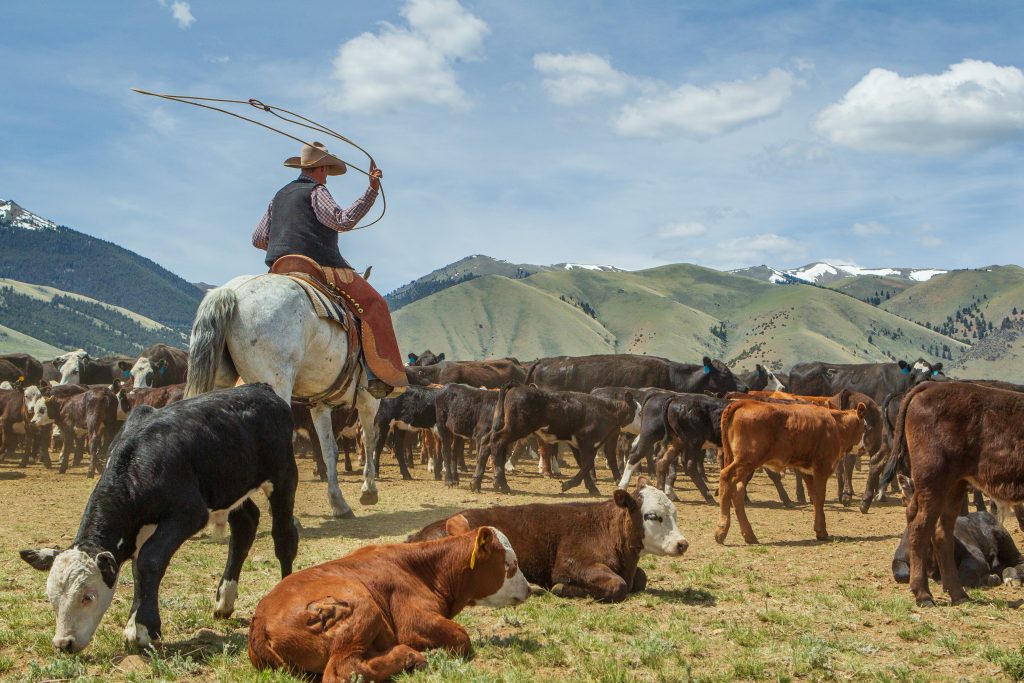Warning: Array to string conversion in /home/domains/dev.landreport.com/public/wp-content/plugins/elementor/core/dynamic-tags/manager.php on line 64
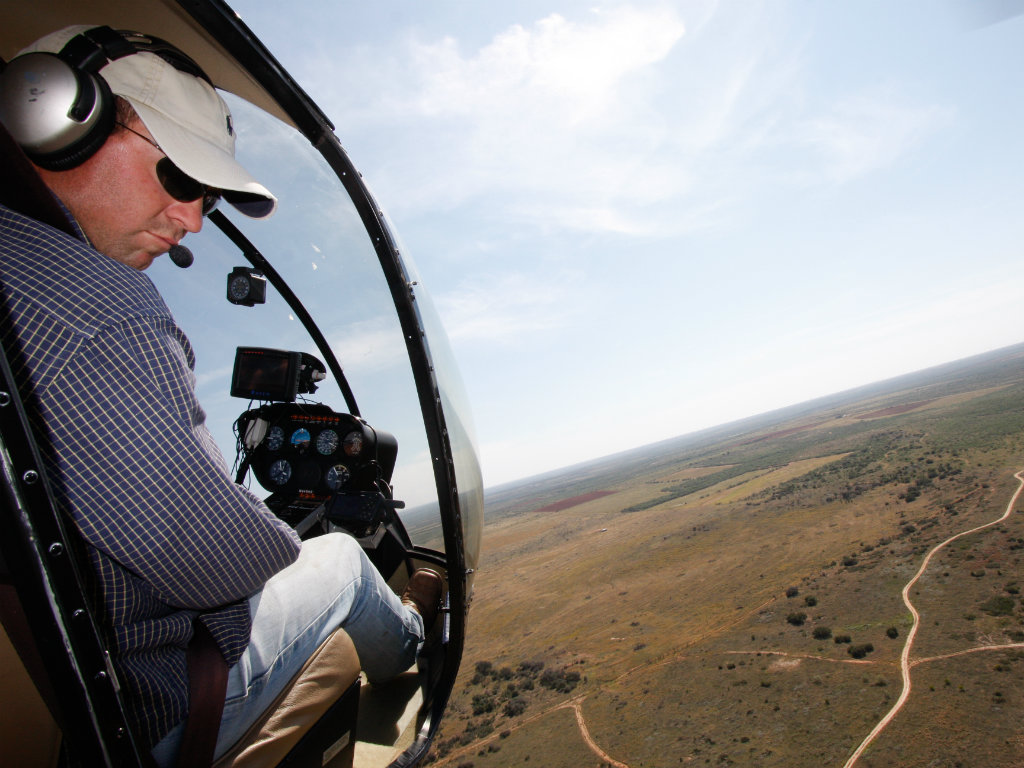
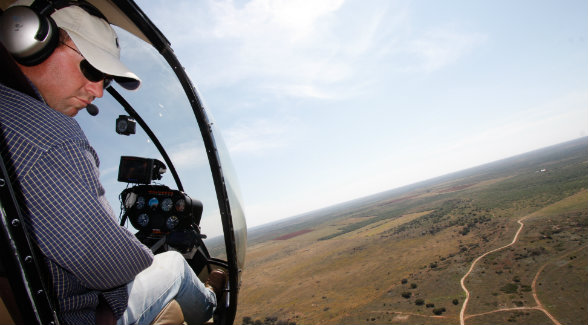
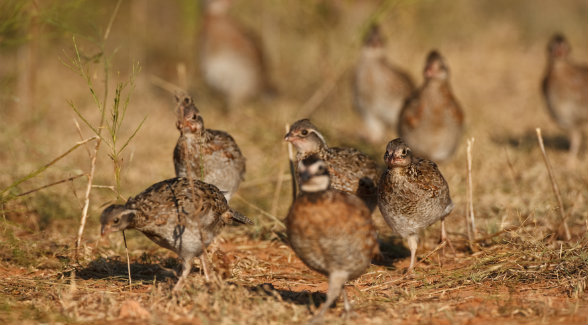
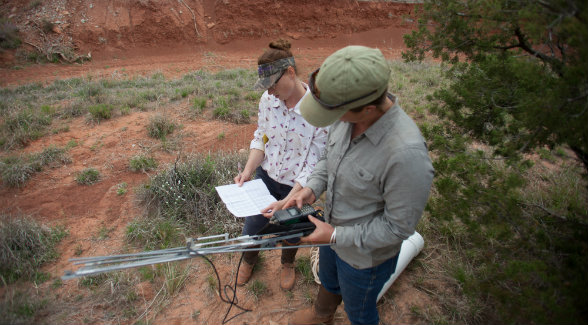
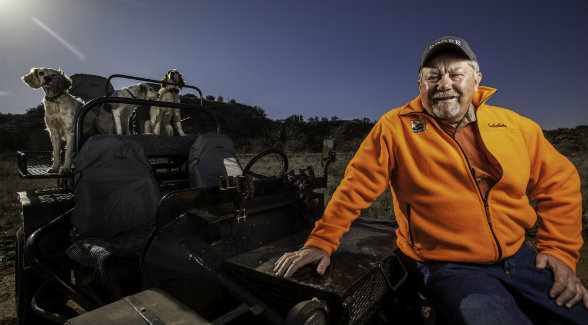
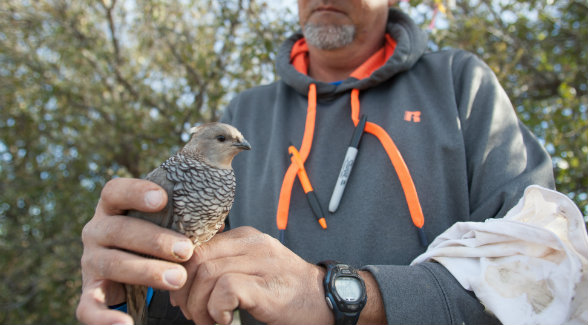
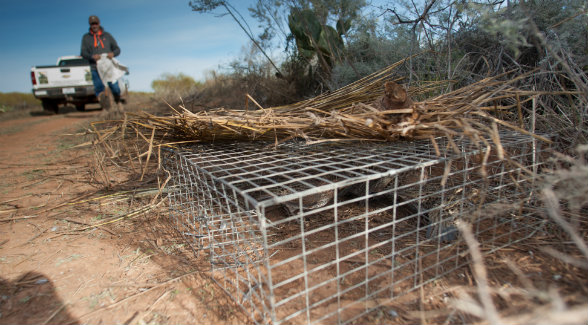
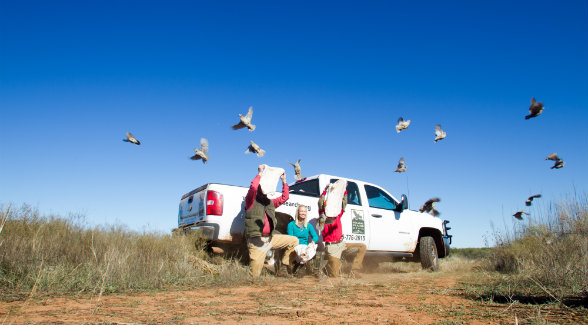
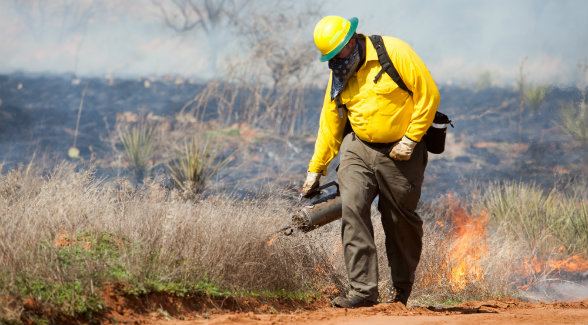
Warning: Undefined array key "separator_height" in /home/domains/dev.landreport.com/public/wp-content/plugins/jet-tricks/includes/addons/jet-unfold-widget.php on line 942

By Henry Chappell
Photography by Russell Graves
Texas quail hunters doggedly pursue the culprits behind the decline of their beloved bobwhites.
In good years when rain comes at the right times, in the right amounts, the Rolling Plains of West Texas can offer the best quail hunting in the country. While the storied plantations of the Deep South might match the Texas plains in numbers of coveys flushed per day, they’re tiny islands of habitat compared to the thousands of square miles of Texas quail country.
During drought years, skilled hunters will run a trailer full of big-running pointers into the ground for two or three coveys. Like drought prone country everywhere, Texas is a place of extremes, of booms and busts.
At a glance, quail population extremes are easily explained. Ample rain and agreeable temperatures stimulate lush growth of native grasses required for nesting. Protein-rich insects thrive in the lushness. Annual forbs provide cover and food through the coming fall and winter and take surviving birds into the next breeding season in fine shape. Drought means sparse cover, few insects, and little to no breeding. The few remaining birds are true survivors, wild, unapproachable, nothing like “Gentleman Bob” of Southern quail hunting lore. Slam the door of your pickup and listen to the sound of a small covey flushing 50 yards away. They are the hardiest of their kind, rootstock waiting for rain.
While drought years can be discouraging, serious hunters wax philosophical, enjoy their rituals and fellowship, admire their dogs’ persistence and grit, and take only a bird or two from scarce coveys. Sometimes they hold off altogether. These plains have been droughty for millennia and will be for millennia yet. Rain and good times will come again.
More vexing and disappointing are years of unfulfilled promise. Generous winter precipitation brings on tender greenery to sustain the birds through February and March. Ample spring rain follows. The plains burst forth with new growth. Come May, ranchers relish the music of sunup to sundown mating calls. Wildlife managers count breeding pairs and nests, and, later, document an abundance of chicks. Late summer surveys prompt “boom” predictions in the annual quail hunting forecasts. Outfitters and guides gear up. Hard cases push the boundaries of decency and professionalism negotiating hunting time with family, bosses, and clients. Out-of-staters plan expeditions to Texas’s quail meccas. Motel rooms in Albany, Childress, Rotan, George West, Falfurrias, and Hebbronville are sold out weeks in advance. Owners of small-town diners look forward to quail season with as much zeal as Neiman Marcus execs pining for Black Friday.

Opening weekend arrives and nobody finds more than a covey or two. Dogs scour gorgeous, sprawling ragweed flats early and late, and take a beating working rough, woody, loafing cover during the middle of the day. Talk in hunting camps and diners focuses on poor scenting conditions – the heat and rank cover. The dogs are stepping on their tongues. A frost or two and some moisture would make all the difference. Quail hunters are a hopeful bunch. Thanksgiving comes and goes. The dogs look great but still find no birds. What the hell happened?
In 1992, Dr. Lenny Brennan, then research director with the Tall Timbers Research Station in Florida – now with the Caesar Kleberg Wildlife Research Institute — wrote that bobwhite quail would be “recreationally extinct” in the Southeast by 2005. In other words, on unmanaged lands, a few birds would eke out a living on the margins, perhaps in numbers sufficient to justify legal hunting, but the days of quail hunting woven into the broad fabric of Southern culture would be finished. Many quail hunters, and even wildlife professionals, including Dr. Dale Rollins, found the prediction overly pessimistic, at least for Texas.
Although I’m not a scientist, I read Brennan’s prediction back in the 1990s and believed it. I had no data; just personal experience. When I was a boy growing up in Kentucky in the 1960s and early 1970s, my father and I could count on moving half a dozen coveys of bobwhites on the small, relatively inefficient farms found in the southcentral part of the Bluegrass State. By Texas standards, it wasn’t even mediocre hunting, but plenty good enough to justify spending too much on bird dogs and shotguns. By the time I left for college in 1978, bobwhite hunting in Kentucky was on its way out. Under the “get big or get out” farming philosophy, crop fields and pastures grew larger and cleaner along their edges. Gone were the weedy corners and brushy fencerows that had sustained bobwhites for more than a century. In 1983, my wife and I moved from Kentucky to Plano about 20 miles north of downtown Dallas. I worked a German shorthaired pointer pup on wild bobwhites in the vacant field behind our first house. Every spring throughout the rest of the 1980s, bobwhites whistled from the brushy, weedy margins of the suburbs. I still live in the area, but I haven’t heard a bobwhite whistle in these parts in 30 years. Those weedy margins have long since been replaced by concrete and Bermuda grass. In sum, my experience with bobwhites has been one of sharp decline in several habitats.
As any serious quail hunter knows, and Dale Rollins now readily admits, Lenny Brennan pretty well got it right. Nowadays, many serious Southern quail hunters head to Texas, Oklahoma, and Kansas to get their dogs into wild birds. The beloved tales by Southern everyman Havilah Babcock now belong to history. Were he alive and working today, the good professor would likely be famous for stories about deer and turkey hunting.
Yet, Rollins’s early skepticism is understandable. A native of Hollis, Oklahoma, he’d grown up with excellent quail hunting. In 1992, hunters of modest means could still find decent hunting in parts of the Deep South, and for those with the money and connections, hunting on the best plantations remained as good as ever. In North Texas, you didn’t have to go far west of Interstate 35 to find decent bird hunting; even the Hill Country in Central Texas held a few pockets of good quail hunting, and of course prime habitat in the Brush Country and Coastal Plains of South Texas would, in the best years, hold a couple birds per acre.
Still, those short-term quail booms hid a depressing, long-term reality. Statewide, Texas’s bobwhite population has dropped approximately 5.6 percent per year since 1980. Simultaneously, blue quail numbers dropped some 2.9 percent per year during that same period. In North Texas, the eastern edge of good bobwhite range has been moving steadily westward. In the early 1990s, Dallas-area hunters might get their birds in the Cross Timbers and Prairies Region near the I-35 corridor. Now, they have to drive at least 100 miles farther west into the Rolling Plains.

The bobwhite quail is the world’s most studied bird. Its sporting qualities and the associated genteel trappings and traditions make it the most popular game bird among wealthy American hunters. Wildlife research is expensive, and hunters across the socioeconomic spectrum, have, more than any other group, opened their wallets in support of conservation. For decades, the Tall Timbers Research Station and Land Conservancy near Tallahassee has set the standard for the study of bobwhite quail ecology in the Southeast. Through its Albany Quail Project headed by Clay Sisson, Tall Timbers conducts research in South Georgia and Northern Florida. Since 1992, Sisson and his colleagues have radio-tracked some 14,000 bobwhites on area plantations. Likewise, the Carolina Regional Quail Project and the Mid-Atlantic Regional Quail Project conduct research and tailor region-specific management recommendations.
In Texas, the venerable Caesar Kleberg Wildlife Research Institute at Texas A&M Kingsville has conducted quail research and provided South Texas landowners with technical guidance since 1981. Until recently, however, Texas’s Rolling Plains region – 24 million acres of midgrass prairie covering 41 West Texas counties — had no quail research station.
The aforementioned Dale Rollins cannot be accused of passivity in the face of Texas’s quail decline. As a professor and an Extension Wildlife Specialist for Texas AgriLife Extension in San Angelo, Rollins oversaw research by scores of graduate students, shared technical guidance with landowners, and supervised habitat improvement on hundreds of thousands of acres in West Texas. In 1993, he founded the Texas Bobwhite Brigade, a youth outreach program that teaches biology, habitat management, population dynamics, ecology, botany, photography, journalism, firearm safety, fishing, communication, critical thinking, team building, and leadership through rigorous summer camps.
Yet the wildlife biologist had long been frustrated by the lack of research-based advice available to pass along to Rolling Plains landowners. In “Quail Preserver,” published in the September 2014 issue of Covey Rise, the late longtime Dallas Morning News columnist Ray Sasser quoted Rollins: “One misconception upon graduating with a PhD from Texas Tech in 1983 was that the bulk of my time would be spent disseminating new research results from my colleagues to the ‘common folks on the back 40.’ In reality, I’ve learned more from dedicated landowners and then cut and pasted their ideas to share with my biologist peers.”
Although he and his colleagues and students made laudable progress during his career with Texas Agrilife Extension, Rollins nursed grander plans, which came together in 2005 while he and Fisher County rancher Paul Melton and two guests cleaned birds after three consecutive 30-covey days.
“A lot of people in-state and out-of-state had been buying land with the intention of managing for quail, so Dale and I felt that research would be very helpful to us all,” Melton says.

“I had some friends in the philanthropic world who came down and met Dale and hunted on the ranch. With a perfect fire down to coals, three martini glasses down to dregs, and three limits of birds headed for the freezer, we had a conversation at the tailgate of my pickup, and the Rolling Plains Quail Research Foundation was born,” Melton adds.
The new foundation needed a dedicated ranch. Melton had one in mind: a 4,270-acre Fisher County property owned by the W.T. Martin Estate. Melton had wanted to buy the ranch since the 1990s but had been rebuffed. The property had all the raw components of an archetypal Rolling Plains quail ranch: both improved and unimproved upland grazing land, cropland, and acreage enrolled in the Conservation Reserve Program. Rollins and graduate students had already done research and habitat improvement on Melton’s ranch and other big spreads and would continue, but the new foundation needed a dedicated piece of land to work through the entire process.
Fortunately, the 30-plus covey days had worked their magic. In 2006, The Conservation Fund, a large environmental nonprofit based in Arlington, Virginia, purchased the property with a donation from the Richard King Mellon Foundation. The property was subsequently deeded to the Rolling Plains Quail Research Foundation (RPQRF).
In 2006, Dallas businessman Joe Crafton, then CEO of Crossmark, started Park Cities Quail Unlimited. Crafton and his fellow members were not pleased that a disproportionate percentage of their donations made their way to Quail Unlimited headquarters in South Carolina. They saw Rollins’s new research center as a much better way to keep their quail conservation dollars closer to home. “After all, quail aren’t migratory,” Crafton points out with a grin. At its first fundraising dinner in 2007, the Park Cities QU Chapter raised about $80,000. Half went to RPQRF, half to QU headquarters.
Crafton says, “From the outset, we realized that as nice as it is to have a research ranch, you can’t do anything without an operating budget. So, we took it upon ourselves to raise money to cover those operating costs every year with extra funds going toward research.” Looking for complete control of funds, Crafton and his fellow conservationists left Quail Unlimited to form the Park Cities Quail Coalition. (After years of financial mismanagement, Quail Unlimited ceased operation in 2013.)
Park Cities Quail Coalition (PCQC) covers much of RPQRF’s operational costs as well as research expenses. It also supports other quail-focused programs such as Borderlands Research Institute, Quail-Tech, Tall Timbers, and the Texas Tech Wildlife Toxicology Lab. At its 2020 dinner and auction, PCQC raised more than $2.2 million for quail research and conservation. All told, it has raised more than $12 million since 2007.

With a new property — the Rolling Plains Quail Research Ranch — operational funding, and a board of directors made up of businessmen and ranchers, Rollins and his crew of graduate students and technicians got to work on habitat improvement, studies on patch grazing, predation, translocation, and prescribed burning, as well as the collection of long-data on the ranch’s bobwhite population.
During those initial years, the familiar formula worked: better habitat plus timely rain equaled more quail. But, as anyone who has spent the better part of a lifetime hunting bobwhites in Texas knows, one of those years always comes, and the simple formula fails. Spring rains fell in 2010, and the prairie responded. A fine hatch and late summer counts portended a great season. Then the birds disappeared. Only three years into its existence, the team faced an existential crisis. In order to fulfill its mission statement, “To sustain Texas’s wild quail hunting for this and future generations,” RPQRF had to get to the bottom of these unexplained population crashes. After all, several consecutive years of poor hunting could dissuade an entire generation of young quail hunters. But the research would be expensive and long-term. Rollins, with the support of his board, decided to move ahead while trusting that the quail conservation community would raise the needed funding.
Thus, Operation Idiopathic Decline was born. Under guidance from scientists at Texas A&M, Texas Tech, and Texas A&M-Kingsville, the team began investigations into parasites, pathogens, and contaminants, sampling some 2,200 quail from 35 counties in the Rolling Plains of Texas and Western Oklahoma. The research brought several issues to light, including antibiotic-resistant, pathogenic bacteria, quail bronchitis virus, and avian influenza. However, two types of parasitic infections stood out: eyeworms and cecal worms.
The eyeworms infect 50 to 70 percent of Rolling Plains bobwhites. These worms feed on tissues and glands within the eyes and nasal sinuses, which may cause partial or complete blindness. Researchers counted 185 eyeworms in a single RPQRF bobwhite. The Rolling Plains is an eyeworm hotspot with infection rates about eight times higher than in South Texas. The birds become infected by eating intermediate hosts such as field crickets and grasshoppers. Although Texas Parks & Wildlife biologist A.S. Jackson documented eyeworm infections in bobwhites in the 1960s, the extent and degree of infection surprised Rollins and his colleagues. Eyeworms also infect blue quail, but only at a rate of about 25 percent; the infections tend to be much less severe.
“The infection rates of those arthropods [grasshoppers, crickets] must change annually,” Rollins says. “We have several years’ worth of specimens in the freezer, but haven’t come up with the money to look at the variation of infection from year to year.” Knowledge of the annual variations could provide clues about environmental conditions that give rise to severe outbreaks.

Cecal worms infect about 90 percent of Rolling Plains bobwhites with as many as 1,700 infecting a single bird. Like other intestinal parasites, cecal worms cause weight loss and overall decreased fitness. “Although eyeworms, have grabbed most of the attention, I tell people that cecal worms may be the bigger culprit,” Rollins says. Former RPQRF president Rick Snipes sums it up: “Take five percent performance off Usain Bolt, and he ain’t Usain Bolt anymore.”
Help is on the way. With funding from RPQRF and Park Cities Quail Coalition, Dr. Ron Kendall and his team at the Wildlife Toxicology Lab at Texas Tech have developed QuailGuard, a medicated granular quail feed that kills both cecal and eye worms. Kendall estimates that a 6,000-acre ranch could be effectively treated at a cost of about $2,000 by feeding when infections usually occur in early spring and late summer. Researchers hope that a medicated feeding program could reduce a 90 percent die-off to 40 to 50 percent — the difference between pretty good hunting and barely worth the time, between decent carryover and starting over next spring. Kendall is optimistic that the Food and Drug Administration will approve QuailGuard for commercial use in the next 12 months.
Dale Rollins stresses that without the support of landowners, projects like Operation Idiopathic Decline would be impossible. The RPQRF team conducts research on some 3 million acres of “partnership properties” in Texas and Oklahoma. A large chunk of partnership property lies within the storied 525,000-acre Waggoner Ranch. Historically, great quail hunting on the Waggoner stemmed more from compatible use of excellent natural habitat than from active management. In 2016, Stan Kroenke bought the ranch from descendants of founder Dan Waggoner and set aside some 40,000 acres as a quail management area. Kroenke Ranches promptly called Dale Rollins.
“We try to base our management strategy on the things they do at the Research Ranch, just on a larger scale,” says Gradie Studdard, Waggoner Ranch’s wildlife manager. “I talk to Dale as often as I can. We do the brush clearing, brush sculpting, and burning. We started in the late fall of 2016, and we’ve been able to improve about 18,000 acres of the 40,000 acres we set aside.”
Like other ranches, the Waggoner suffered a 2016 crash. “After a great hunting season, we were excited about seeing plenty of family units through spring and summer, but then dove season hit and the birds disappeared. We had eye worm problems and heavy predation,” Studdard says. “But we’ll continue to do our part so that when Mother Nature decides to do her part, these birds will have the best chance of survival that we can possibly give them. That’s Mr. Kroenke’s mission.”
Despite drought and parasites, Texas’s Rolling Plains should remain one of the country’s quail hunting hot spots. Unlike the Southeast, where land use has shifted toward pulp pine forestry, large pastures, non-native grasses, and single-crop farming, Texas ranching and good quail habitat are not mutually exclusive. Certainly, Florida’s Tall Timbers Research Station has demonstrated that impressive bobwhite densities can be achieved on exquisitely managed Southern plantations maintained in longleaf pine savannah. But at tremendous expense. A bobwhite density of a single bird per acre can be managed in the Rolling Plains at about one-tenth the cost required in South Georgia.

Work continues at the Research Ranch and partner properties. Thanks to funding from Joe Crafton and Park Cities Quail Coalition, scientists completed sequencing of the bobwhite genome in 2012. The Bobwhite Genome Project could help determine why some isolated bobwhite populations fare better than others under nearly identical conditions. Operation Transfusion, a long-running program evaluating the efficacy of translocating wild bobwhite and blue quail into suitable areas where they were previously abundant will continue as a result of a grant from PCQC and Bass Pro Shops. In Rollins’s words, “We are tweaking the knobs a little on this evolving area of research.”
On a less lofty, but no less important level, the Research Ranch will continue to host sporting dog field trials and various educational events such as prescribed burning workshops and field days for land managers. In 2021, the Research Ranch will conduct its first Sporting Ranch Training Program, a 13-week curriculum to train six military veterans in habitat management, bird dog handling, ranch equipment operation, and other hunting-related matters. The team will also help with job placement.

Big plans require expansion. By spring 2021, a four-building headquarters will feature a research center, an education center, a lodge and bunkhouse for overnight guests, and a hospitality cabin for donors, members of the media, and other friends of the foundation.
Current RPQRF president Justin Trail sums up the long-term commitment to wild quail and the hunting tradition. “Our job is to put into place and execute a perpetuation plan to ensure that the funding, talent, and other resources are in place for future generations who will do the work and the quail enthusiasts we serve.”
RELATED ARTICLES
2021 Ranchland Deal of the Year
By Cary Estes Photography by Kenton Rowe The sale of the Beaverhead Ranch by Matador Cattle Company …
Sold! Boot Jack Ranch Goes for $47 Million
By Eric O’Keefe One of the country’s premier listings, Colorado’s Boot Jack Ranch, sold earlier this …
Vail Resorts to Buy Whistler Blackcomb
Canadian government approves $1B acquisition. The world’s biggest ski resort company just got bigger. Vail …
Elk Creek Ranch Acquires Seven Lakes
For those who are passionate about outdoor pursuits, the next great adventure can’t come soon enough.

